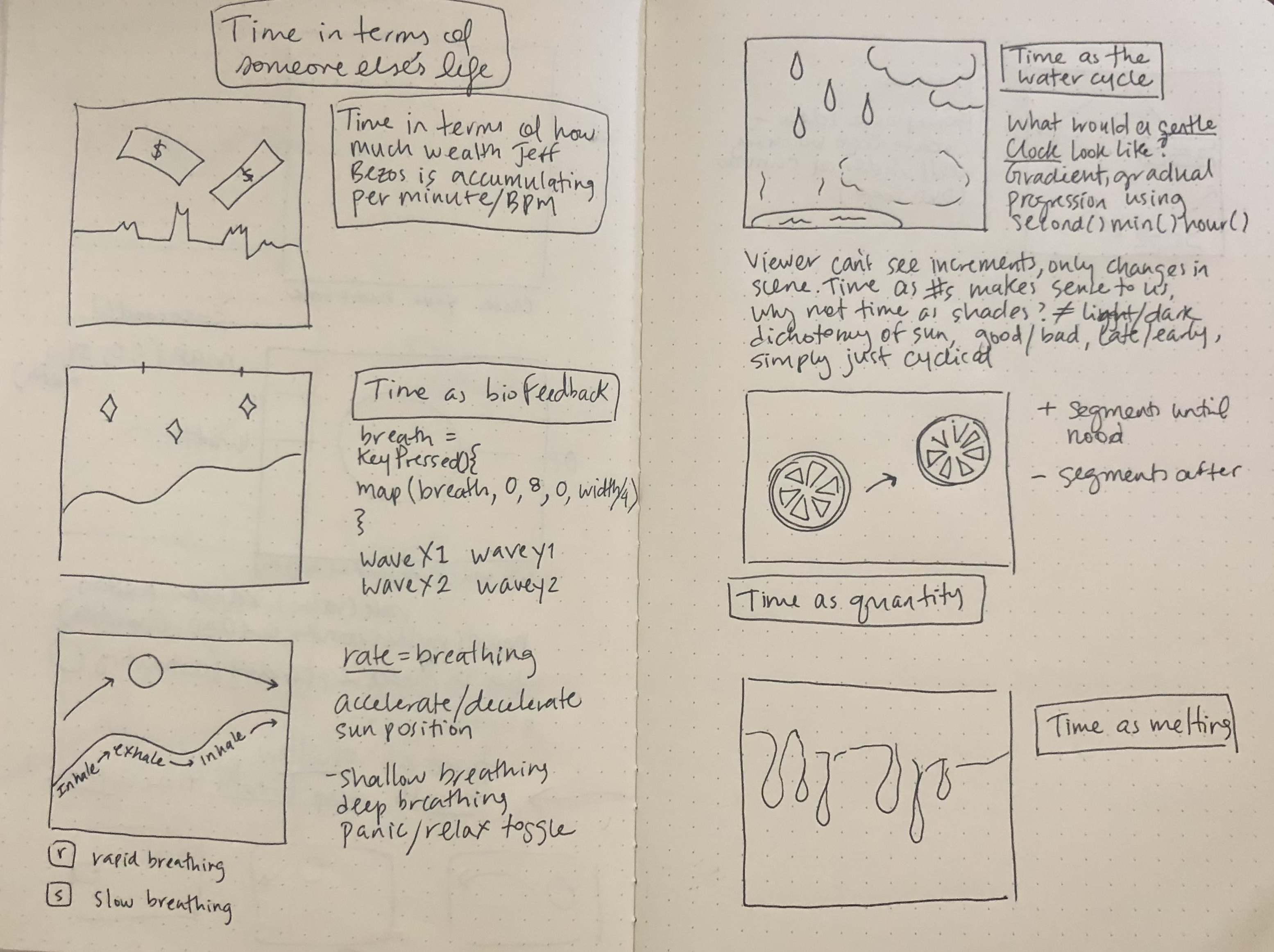#3 Experimental Clock: biofeedback
Hit "a" to breathe shallow, anxious breaths. Hit "c" to breathe calmly.
Sine wave code adapted from p5 resources page. Please refresh the page to restart.
Objective
Design and code an experimental clock that expresses a novel way of tracking time.
Design Process
I wanted to think about an alternative or experimental way of visualizing time passing. I explored ideas such as a gentle clock that would use the water cycle and the computer's clock to denote time of day but never show the increments of seconds, minutes, or hours, neither show time through a day though light/dark of the sun. Exploring the ways that the experience of time changes when numeric timekeeping is unavailable, and how time often seems to accelerate or decelerate based on the way we observe it, I wanted to think about the ways that we affect time, or our experience of time, rather than how it effects us. This sketch imagines a biometric clock that allows the user to change the speed of time with their own experiences. A faster, anxious breath causes time to move more quickly, while a deeper breath slows time.

Exploring alternative forms of timekeeping.
Reflection
I'm still working on getting the sketch to loop after the sun sets using modulo. While coding the sketch into P5, I found it interesting to think about the ways that time can be conceived of in units of our own perception. For example, a faster breath wave makes the sun appear to move more quickly across the sky. This project was a great opportunity to explore the difference between position-based conditionals and an animation style sketch. Going forward, I plan to edit the code to be a more animation-focused approach which will fix the issue with the sketch not looping.